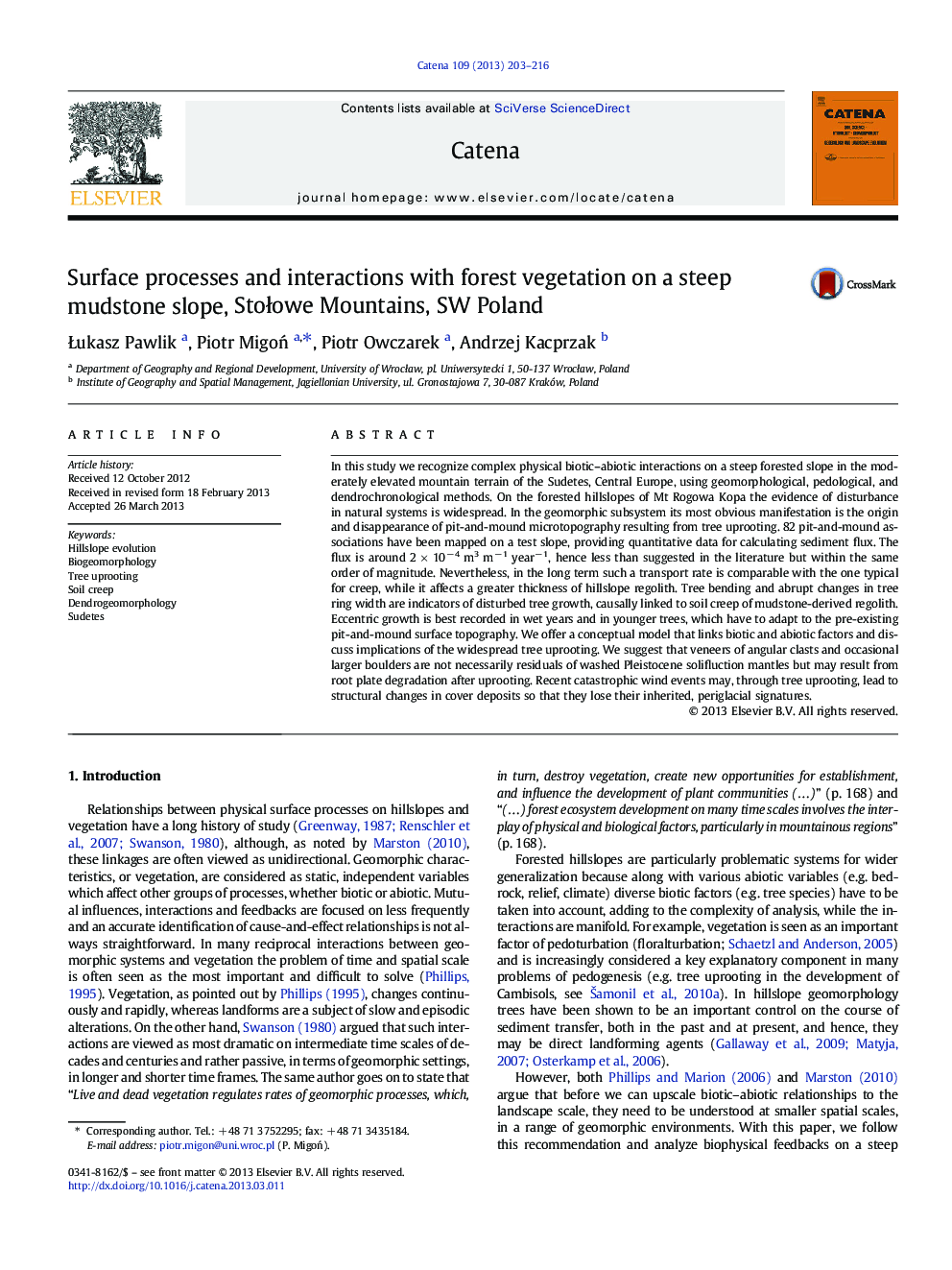| Article ID | Journal | Published Year | Pages | File Type |
|---|---|---|---|---|
| 4571585 | CATENA | 2013 | 14 Pages |
Abstract
In this study we recognize complex physical biotic-abiotic interactions on a steep forested slope in the moderately elevated mountain terrain of the Sudetes, Central Europe, using geomorphological, pedological, and dendrochronological methods. On the forested hillslopes of Mt Rogowa Kopa the evidence of disturbance in natural systems is widespread. In the geomorphic subsystem its most obvious manifestation is the origin and disappearance of pit-and-mound microtopography resulting from tree uprooting. 82 pit-and-mound associations have been mapped on a test slope, providing quantitative data for calculating sediment flux. The flux is around 2 Ã 10â 4 m3 mâ 1 yearâ 1, hence less than suggested in the literature but within the same order of magnitude. Nevertheless, in the long term such a transport rate is comparable with the one typical for creep, while it affects a greater thickness of hillslope regolith. Tree bending and abrupt changes in tree ring width are indicators of disturbed tree growth, causally linked to soil creep of mudstone-derived regolith. Eccentric growth is best recorded in wet years and in younger trees, which have to adapt to the pre-existing pit-and-mound surface topography. We offer a conceptual model that links biotic and abiotic factors and discuss implications of the widespread tree uprooting. We suggest that veneers of angular clasts and occasional larger boulders are not necessarily residuals of washed Pleistocene solifluction mantles but may result from root plate degradation after uprooting. Recent catastrophic wind events may, through tree uprooting, lead to structural changes in cover deposits so that they lose their inherited, periglacial signatures.
Related Topics
Physical Sciences and Engineering
Earth and Planetary Sciences
Earth-Surface Processes
Authors
Åukasz Pawlik, Piotr MigoÅ, Piotr Owczarek, Andrzej Kacprzak,
